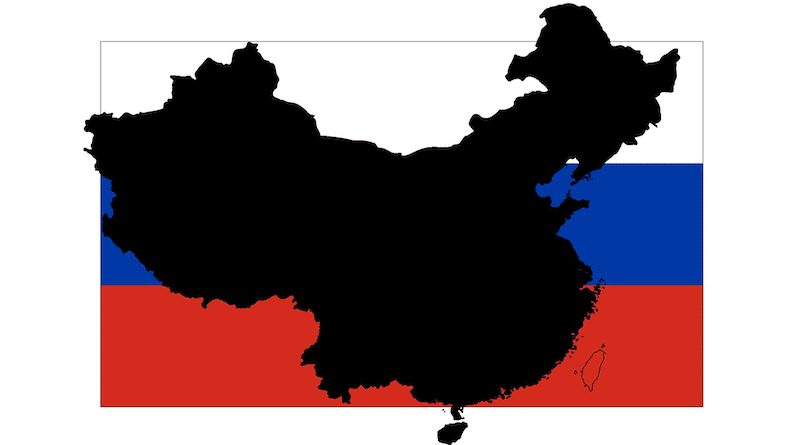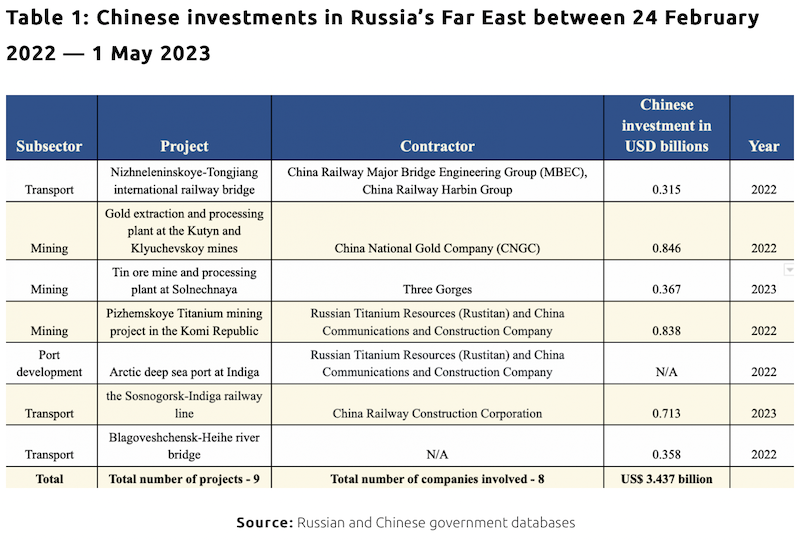China Steadily Expanding Investments In Russia Since The Ukraine Conflict – Analysis
By Observer Research Foundation
China and Russia share a long, multifaceted, and complex relationship dating back to the 17th century when China’s Ming dynasty annexed present-day regions of Far-East Russia (1858-60). The two countries have been both allies and enemies over the years, but in recent decades they have grown closer, forming a strategic partnership and challenging the United States (US)-led international order. The complementarity of their economies, similar political apparatuses, geographical proximity, and concurrent strategic aims have driven the two ancient civilisations even closer.
On 4 February 2022, the opening day of the Winter Olympics in Beijing, President Xi Jinping and President Vladimir Putin declared a ‘no limits’ partnership’ that ‘surpasses an alliance.’ The joint statement released thereafter stated that the bilateral was more resilient than any ulterior Cold War alliance and that the partners meant to upend the current US-led liberal international order. Twenty days later, Russia tested this newly bolstered partnership by launching a ‘special military operation’ on the eastern borders of Ukraine.
The impact of this operation was significant as, in its immediate aftermath, China suspended or delayed several investment projects in Russia. Yet, more than a year later, China has resumed some investment activity. This article examines Chinese investments in Russia since the Ukraine war began and analyses its geostrategic and geoeconomic implications.
From Nord Stream to Power of Siberia
After Russia’s invasion of Ukraine, the significance of China as an energy partner to Moscow has grown substantially. With Russia facing Western sanctions and Western oil companies ceasing operations, the Kremlin has expanded its “Pivot to the East” policy.
Prior to this, Russia was deeply engaged with the European oil market. Russia exported155 billion cubic metres of gas per year to Europe in the pre-war period. The Nord Stream undersea pipelines that originated in western Russia supplied gas to Germany, from where it was distributed to the rest of Europe. These pipelines bypassed Ukraine. While this benefitted the rest of Europe, it did not bode well for Ukraine as it missed out on transit royalties worth US$2 billion annually, and it lost the capacity to disrupt Russian gas exports, a potentially significant deterrent against Russian aggression. However, since the war began, Russia turned off the supply from these pipelines to deter European support for Ukraine.
This discontinuance from the European market has provided an opportunity for Beijing to expand its engagement with Russia, especially the Russian Far East.
Russia’s Far East: A new theatre for Chinese investments
For long, Russia’s far eastern Khabarovsk Krai province has piqued Beijing’s interest. The province is a trove of unexplored energy and mineral reserves and provides a land-based energy supply route to China. China has historical links with the region. In the 19th century, China signed a series of agreements with the Western colonial powers, and Tsarist Russia annexed the Amur and far east regions in present-day Russia as a result of one such treaty — the Treaty of Tientsin, 1860. China’s history with the far east region always prevented Russia from giving the Chinese access to key resources of the region. In 2014, when Russia launched the Arctic Development Plan, it made no mention of Chinese involvement or even prioritising Chinese needs in developing the region.
However, today, the dynamics within the bilateral have changed. With the Global North largely alienating Russia, Moscow has turned to its most steadfast contemporary partner—China—for propping its economy by shoring China’s oil and gas reserves and paving the way for China-financed development and energy exploration in the Amur, Siberian and North Russian regions.
The Power of Siberia pipeline, exporting 24 bcm/year of gas to China, is a testament to this. Since the war began, China has agreed to add two more branches to this pipeline: Power of Siberia 2 and 3 will carry 28 and 34 bcm/year of gas to China upon completion, due in 2025 and 2029, respectively.
However, Chinese investments in Russia since the Ukraine war are not just energy-centric but also cover the mining and infrastructure development sectors.
In May 2023, Russian deputy Prime Minister Yury Trutnev stated that more than 90 percent of Foreign Direct Investment (FDI) in the Far East—26 infrastructural projects worth US$1.6 billion—were being financed by Chinese state companies. This indicateda 150 percent year-on-year (YoY) increase in regional Chinese investments. China is also the region’s largest trading partner, with a record YoY increase of 45 percent between January–August 2022 (US$14.3 billion). The Far East is Russia’s most important asset in attracting Chinese investments.
Both countries have also leveraged the Power of Siberia pipeline to further decouple from Western energy supply chains. Russia has become China’s top energy provider in 2023 from its third largest supplier in 2021 after Saudi Arabia and Iran. China is also buying Russian crude because of its steep discounts. Russian crude averagedUS$73.53/b, 13.7 percent lower than the international oil market average of US$85.23/b. At Russian oil imports worth US$83.7 billion in 2022, Beijing saved close to US$ 11 billion on last year’s energy imports.
Moreover, both countries have used bilateral currency swaps for this trade, thereby insulating the payments from Western sanctions. China’s Harbin Bank, China Construction Bank and Agricultural Bank of China, which are less connected to the SWIFT and US dollar-dominated international financial system, are being used to trade in bilateral currencies.
Besides securing the Russian Far East energy supplies, Chinese companies have also sought to fill the vacuum created by the exit of 1000 Western multinational companies from after February 2022. Eleven Chinese automobile companies like Chery, Greatwall and Geely are projected to capture 40 percent of the Russian market, as compared to 6 percent in 2021. There was also a 40 percent YoY increase in household appliance exports from China in 2022. The most rapid market capture was seen in the smartphone sector, where Chinese companies such as Xiaomi and Realme accountedfor 70 percent of the market in 2022.
Yet, there is also a contradictory trend. The fear of Western sanctions has driven away major Chinese tech companies such as Huawei and DJI from Russia, much to the chagrin of Moscow. Even Chinese state banks such as ICBC and China Development Bank have curtailed operations.
Conclusion
Chinese investment in Russia has surged in various sectors, including energy, infrastructure, and transport. This influx of Chinese capital has helped Russia mitigate the adverse effects of Western sanctions and has provided much-needed support for its economic growth. However, this dependency on China comes with its own set of challenges and risks. The long-term risks of Russia’s increasing dependency on China are uncertain. While Chinese investment provides immediate benefits, it also raises concerns about the potential loss of sovereignty and control over key sectors of the economy. Russia needs to diversify its energy exports to avoid creating irreversible geoeconomic and strategic dependencies on China.
About the author: Prithvi Gupta is a Research Assistant with the Strategic Studies Programme at the Observer Research Foundation
Source: This article was published by the Observer Research Foundation


